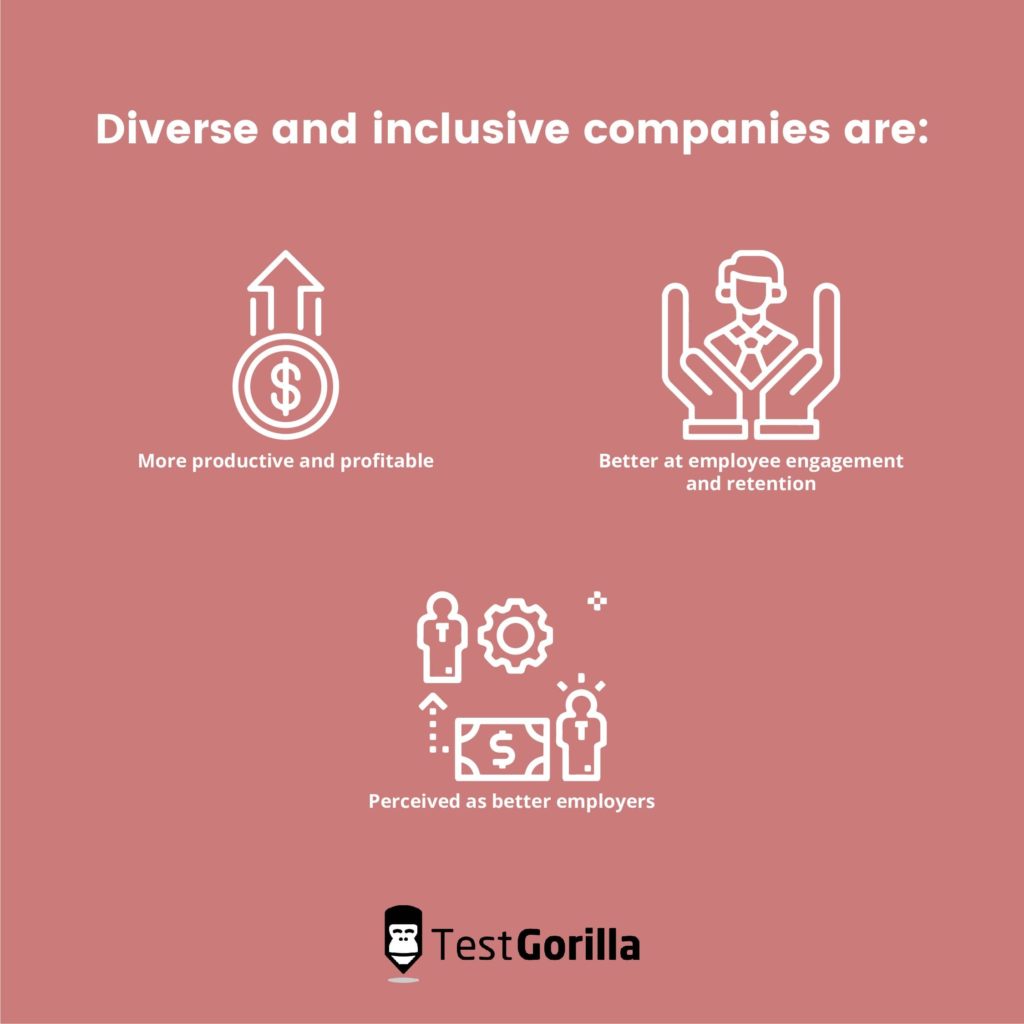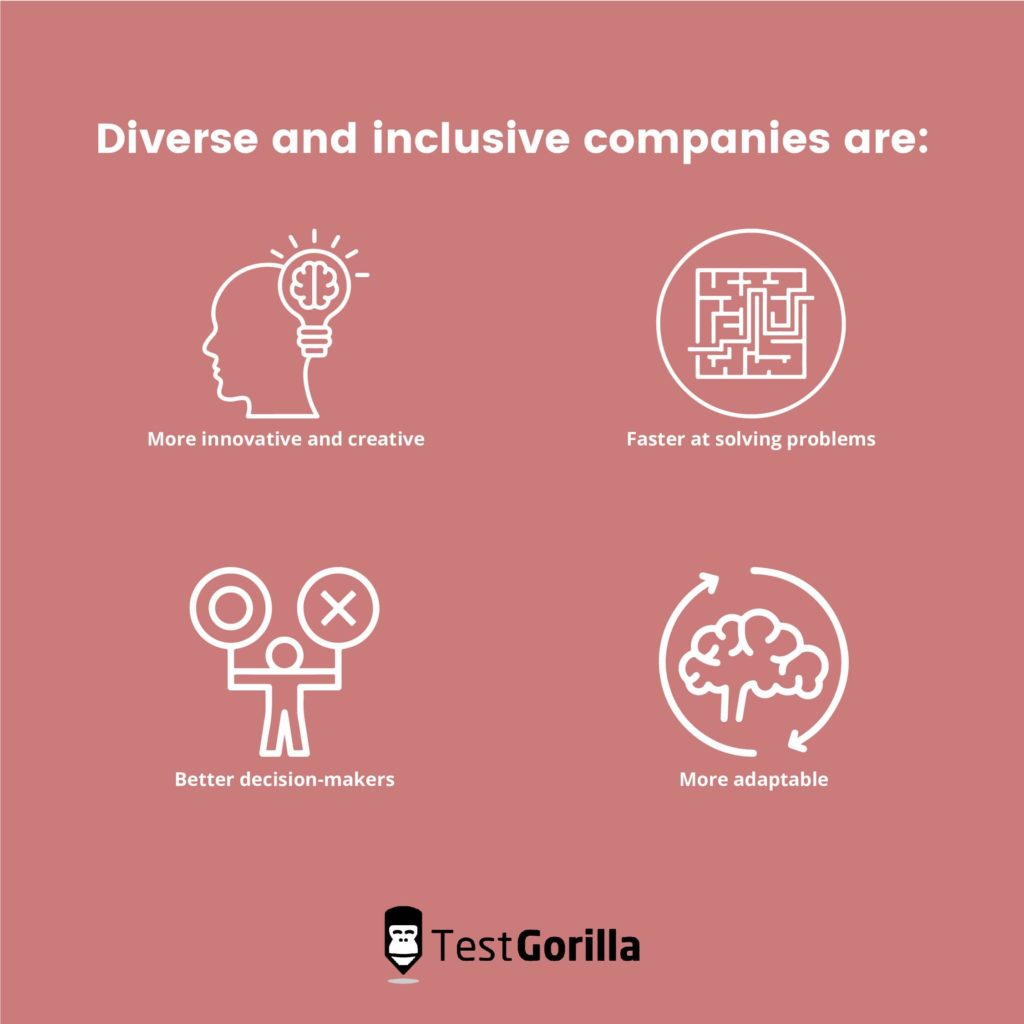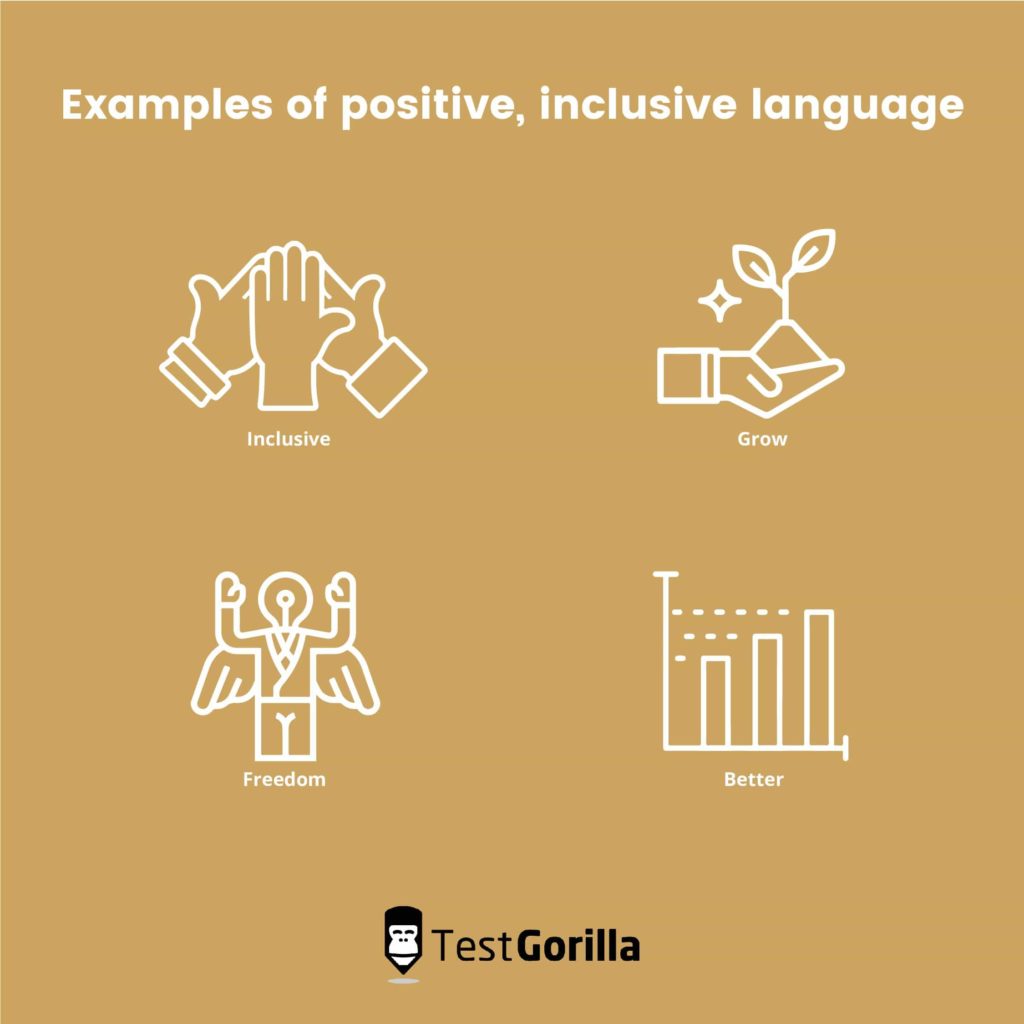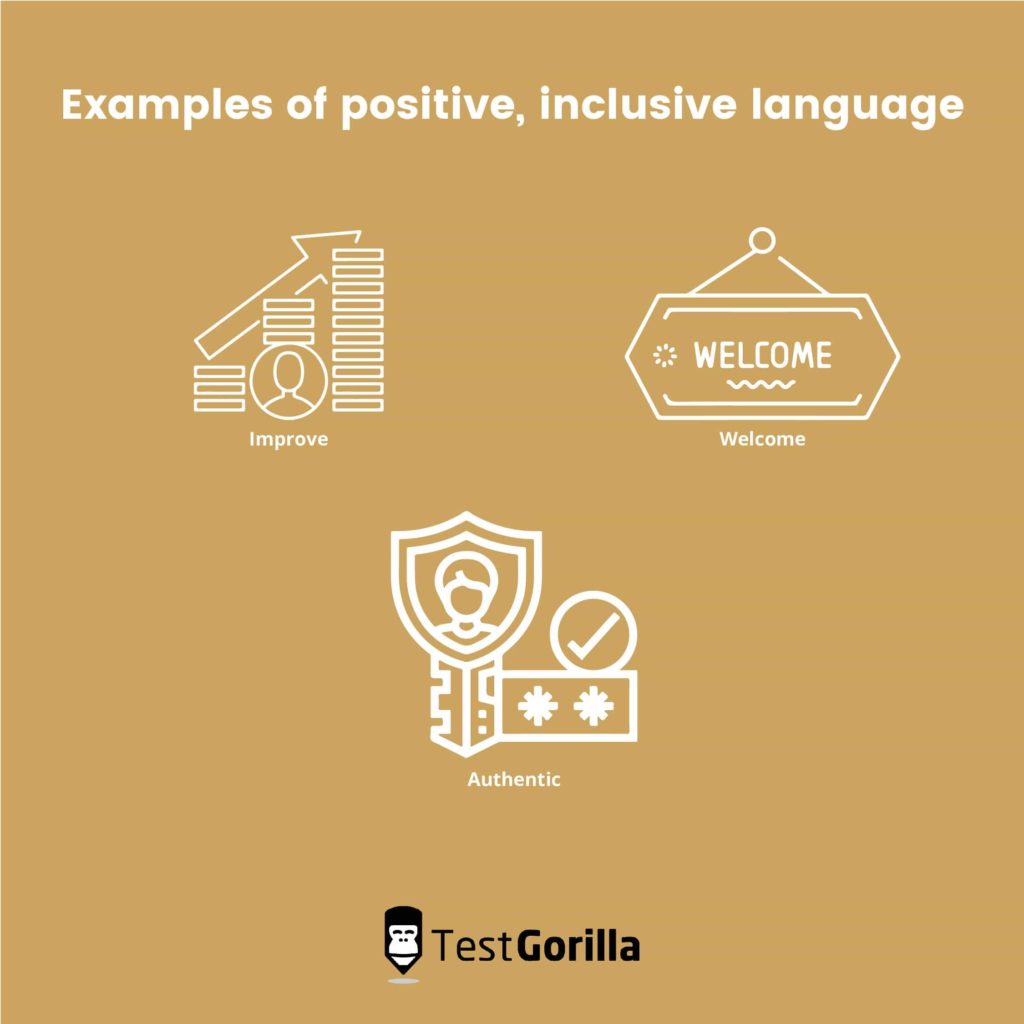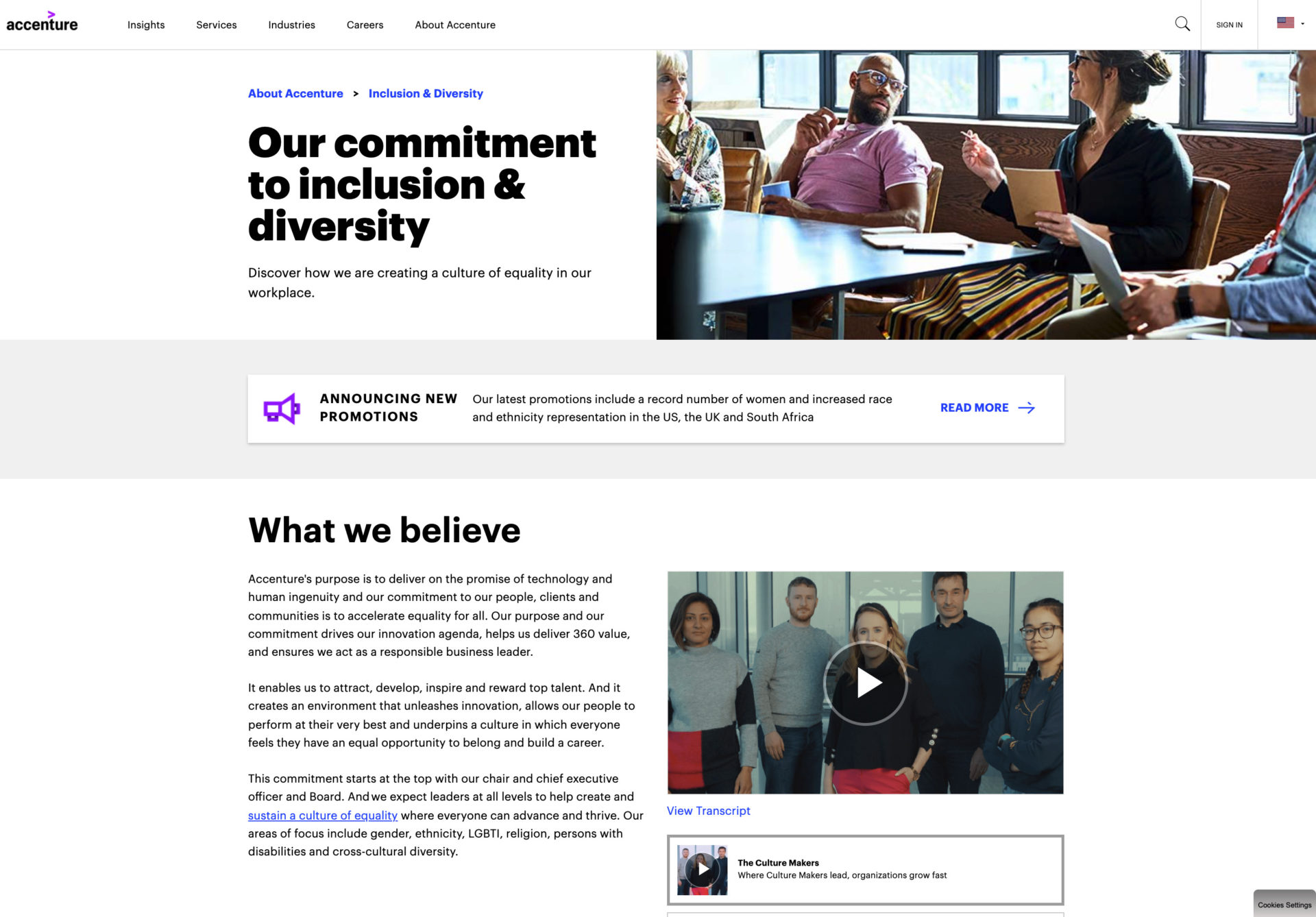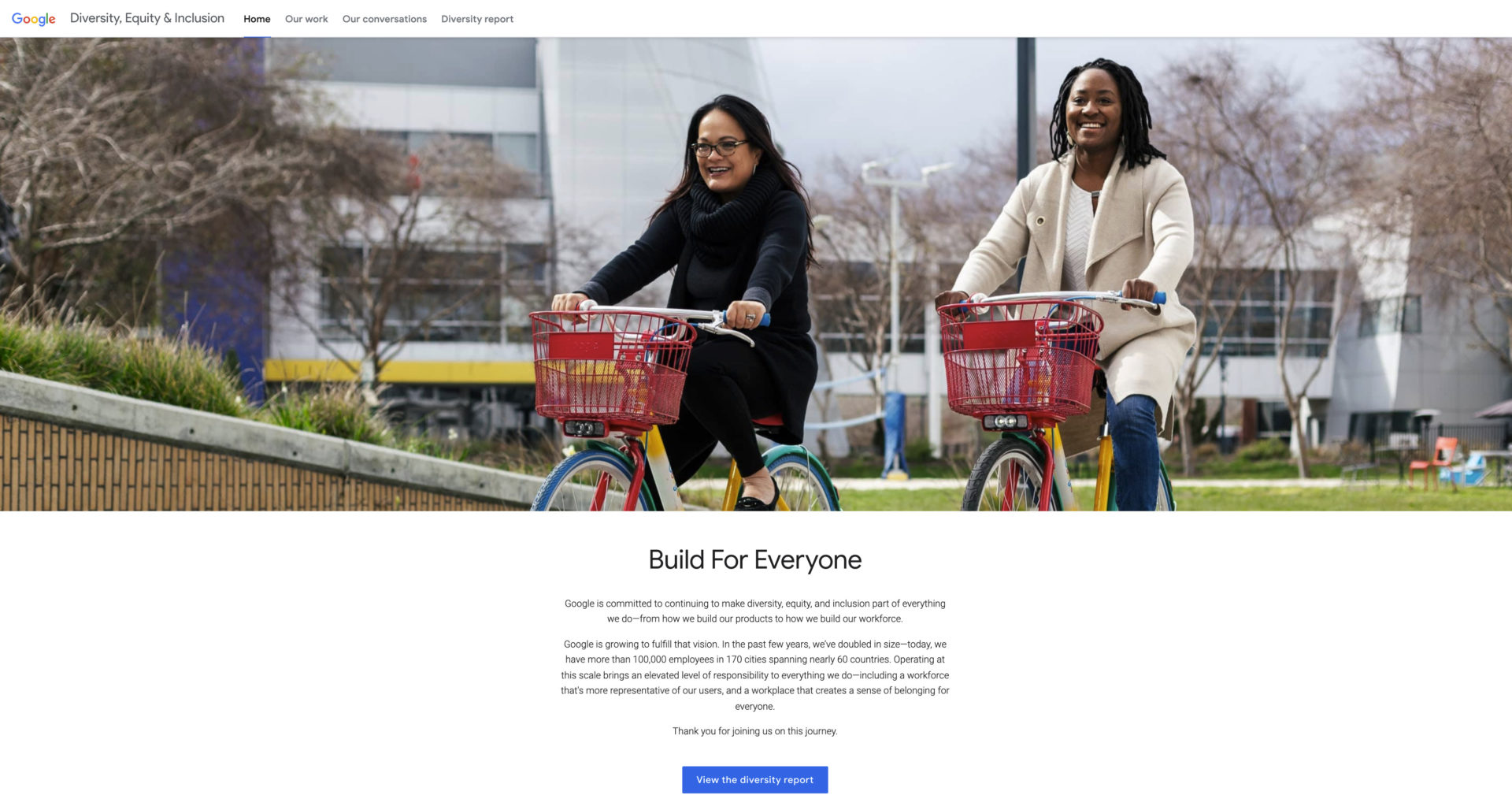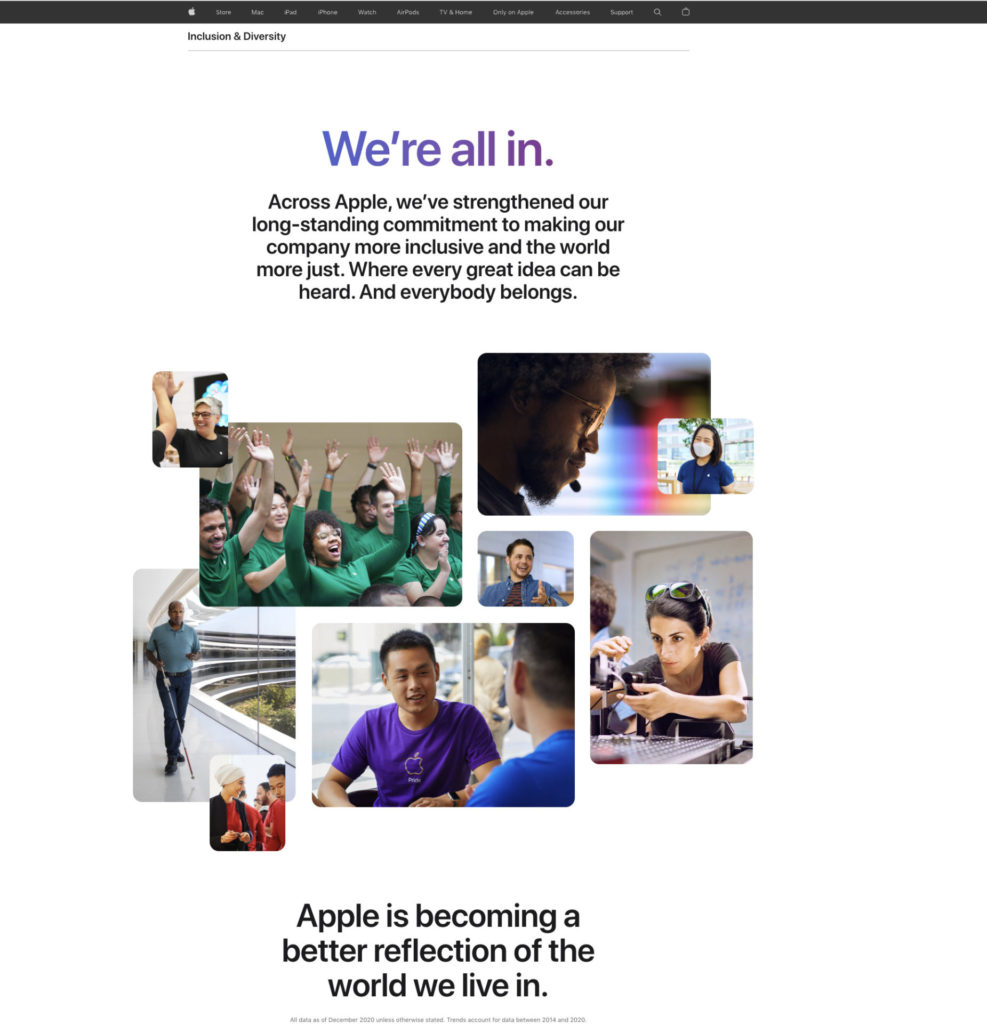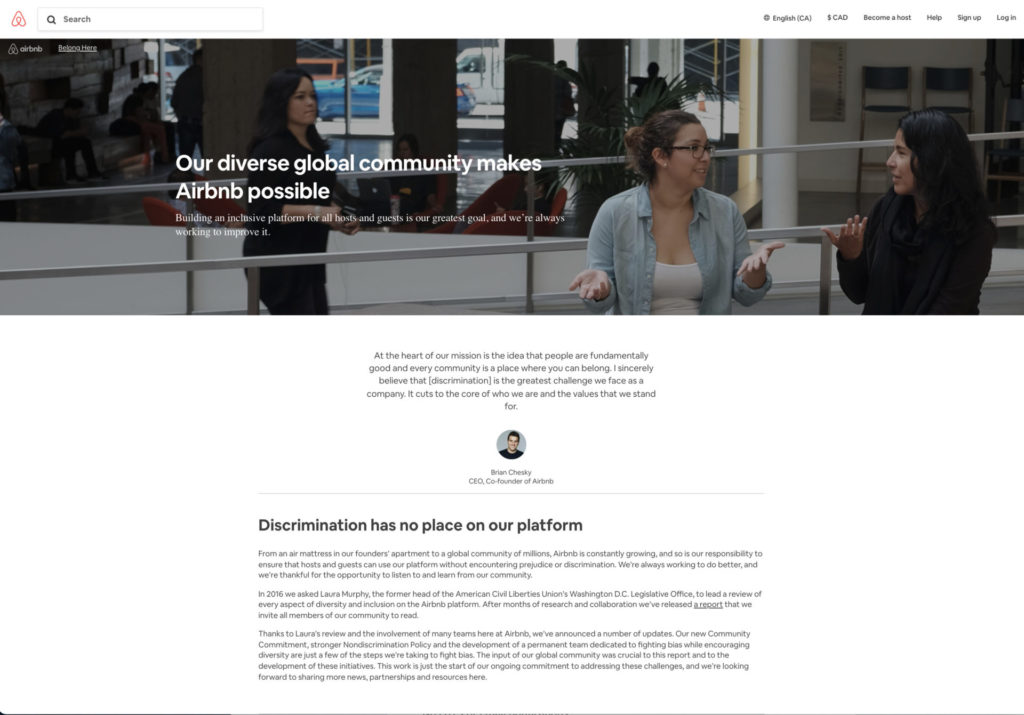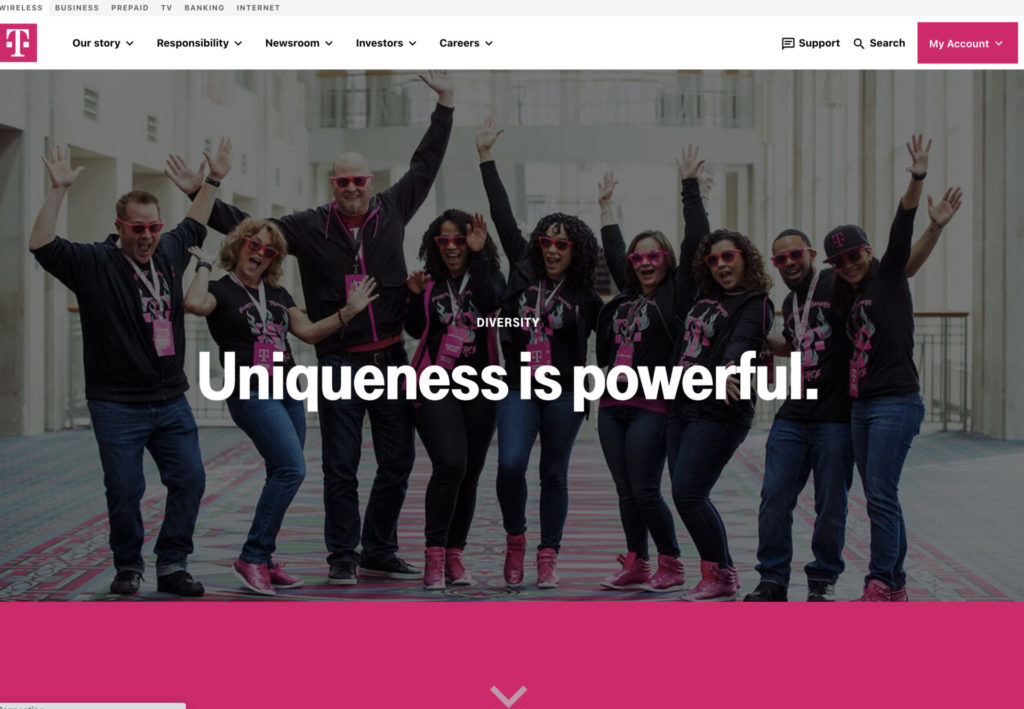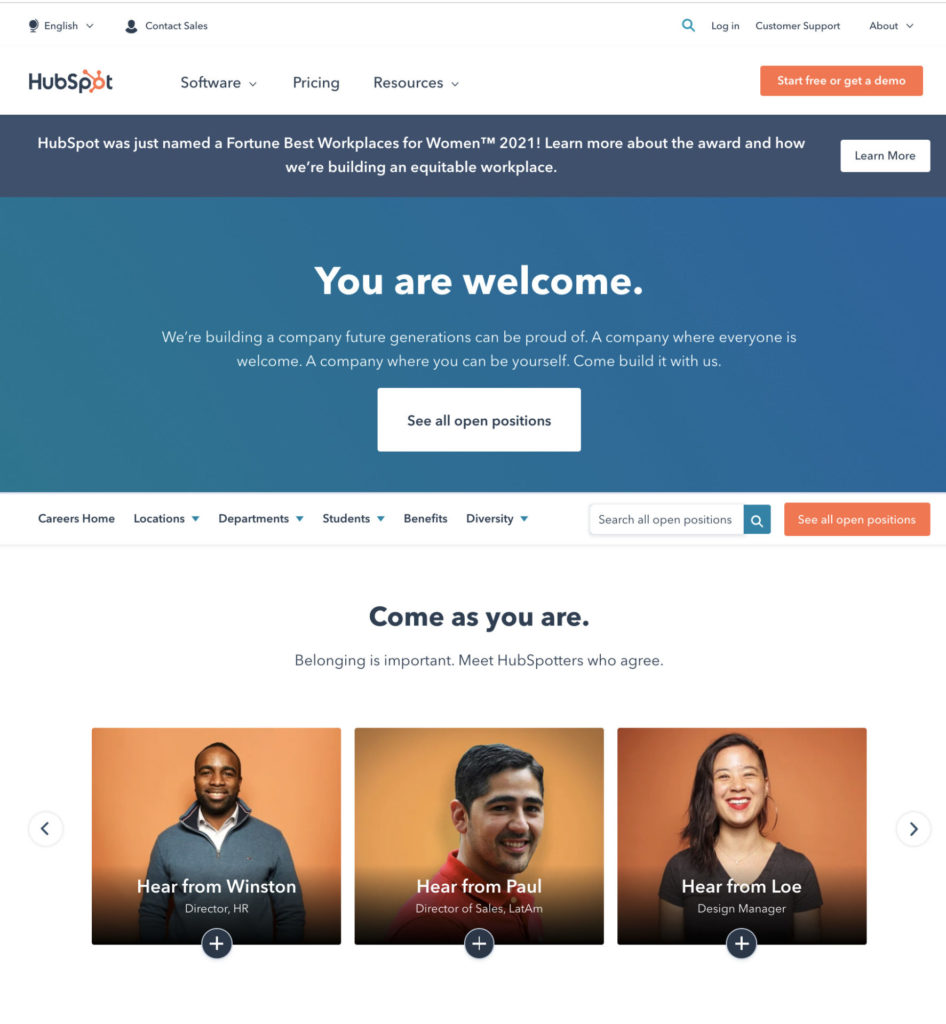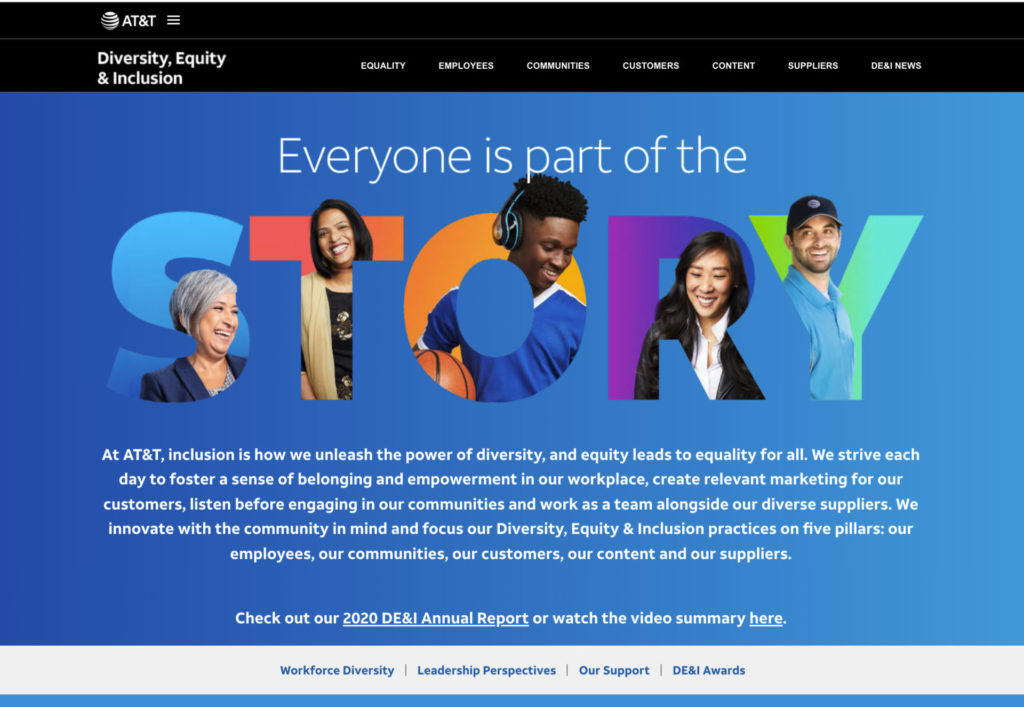How to write an inspiring diversity and inclusion statement
Diversity and inclusion statements used to be considered desirable documents for only the most progressive organizations. But after the recent wave of social justice movements focused on gender, racial, and sexual diversity, companies are taking a more determined approach to workplace diversity.
As a result, job seekers expect their potential employer to have an authentic and actionable diversity and inclusion statement.
In this article, we’ll share tips for writing a meaningful diversity and inclusion statement, including real examples from the world’s top companies.
Table of contents
What is diversity and inclusion (D&I)?
Before writing a diversity and inclusion statement, you should have a strong grasp of the difference between these two terms.
Diversity in the workplace refers to employing people with a wide variety of characteristics and identities. Workplace diversity isn’t limited to racial or ethnic diversity. Employees can also differ by gender, sexual orientation, religion, age, physical abilities, cognitive abilities, political views, life experiences, and many other characteristics.
Inclusion or inclusiveness is about creating a workplace environment where all people feel equally valued, psychologically safe, and free to be at their best.
When people talk about diversity and inclusion, they often talk about equity too. Equity is about providing equal access to the same opportunities, recognizing that a diverse group includes people who’ve experienced different advantages and barriers. Equity aims to acknowledge those unequal starting places by committing to correcting the imbalance.
While these are all related concepts, they’re not synonyms. For example, you can have diversity without inclusion if you hire a diverse workforce but then marginalize a particular group. You can also have diversity without equity if you treat everyone equally rather than acknowledging the advantages and barriers that different groups face.
Why you should prioritize diversity and inclusion
There are countless benefits to diversity in the workplace. Research suggests diverse and inclusive companies are:
More innovative and creative
Faster at solving problems
Better decision-makers
More adaptable
More productive and profitable
Better at employee engagement and retention
Perceived as better employers
One of the first steps towards a more diverse workforce is a strong diversity and inclusion statement.
What is a diversity and inclusion statement?
A diversity and inclusion (D&I) statement is a company’s written commitment to diversity, equity, and inclusion.
It tells employees, customers, investors, job candidates, and other stakeholders how your company plans to incorporate diversity into its mission, values, and actions.
You should feature your D&I statement prominently on your website, in your job descriptions, on any online profiles, in your office or internal documentation, and anywhere else it may have an impact.
What should be included in a diversity and inclusion statement?
There’s no standard format for writing a diversity and inclusion statement. Each D&I statement should be written specifically and authentically for your company. Following a template would be far less impactful than writing something from the heart.
Some companies choose to write one statement for diversity and another for inclusion, whereas others will combine them into one statement.
There’s no standard length either. Some companies choose to write a 75-100-word statement, whereas others create entire websites to detail their D&I strategy. Use whatever length makes sense for your business (and your budget).
That said, here are some elements that are commonly included in the best D&I statements.
1. Captivating headline(s)
Start your diversity and inclusion statement with a captivating headline. Don’t just call it “Diversity & Inclusion Statement.”
Create a brief, yet compelling headline that conveys your commitment to diversity and inclusion.
Here are some example headlines from real companies:
“Build for Everyone” — Google
“We’re all in.” — Apple
“Our diverse global community makes Airbnb possible” — AirBnb
“Creating systemic solutions is key to driving progress.” — Nike
“Inclusion on-screen starts with inclusion in the office.” — Netflix
2. Your commitment to D&I
Of course, your D&I statement should include what you’re doing to promote D&I within your organization.
This includes your philosophy on diversity and inclusion and how it relates to your company mission, plus the actions you’re taking towards building a more equitable environment.
For example, Apple states:
“Accountability measures across the company allow us to track progress and build a foundation for lasting and durable change. And we are listening to employee feedback, amplifying underrepresented voices, and taking action to meet our teams’ needs.”
3. Mention underrepresented groups
The best D&I statements directly acknowledge specific underrepresented groups.
This could include statistics for your diversity initiatives, such as representation statistics, recent improvements your company has made, or your diversity targets.
Apple’s same statement on diversity includes stats such as:
“The number of employees from underrepresented communities (URCs) has increased by 64%, or over 18,000 people, and makes up nearly 50% of Apple’s U.S. workforce.”
Beyond these points, there are no rules on what to include in your statement. However, there are some approaches you can take to making it more impactful.
Tips for writing a meaningful diversity and inclusion statement
While the task of writing a diversity and inclusion statement is open-ended, here’s what you can do to ensure your statement has its intended impact, creating a more inclusive environment at your company.
1. Don’t write in “legalese”
Whatever you do, don’t use overly legal language. Unfortunately, this is the approach many companies take.
Here’s a fictional example: “Company X is committed to fair hiring practices that promote diversity in the workplace. We implement policies and procedures against discrimination and harassment and promote equal opportunities to all groups of people. We embrace diverse perspectives independent of ethnicity, national origin… etc.”
Technically fine, but… yawn.
The goal of your diversity and inclusion statement is to inspire feelings of safety. If it sounds like it was written by your lawyers, it may have the opposite effect.
2. Be authentic
The number one aspect of a strong D&I statement is authenticity. Your statement should sound like it came from real people who truly care about creating an inclusive work environment.
This means using plain, simple language that comes from the heart. It also means saying things your company intends to put into action and speaking to your core values.
People — especially those that have dealt with workplace hardships — can see through shallow words.
3. Involve your team
How do you achieve authenticity? Involve your team!
Ask them what diversity and inclusion means to them by asking questions such as:
What actions can we take to improve the diversity of our team?
How can we make our employer branding more inclusive?
Why might people of differing identities not want to work here?
What are we doing today that negatively impacts inclusion in our workplace?
What barriers stand in the way of people being at their best?
By listening to and using the words, emotions, and ideas of your team, your statement will be much more powerful.
4. Speak to your company’s story
Another way to add authenticity is to tell your company’s story. What are your values? What’s your mission? How do those play into diversity and inclusion?
Netflix is a great example of a company incorporating its everyday mission and values into its D&I statement:
“Netflix’s greatest impact is in storytelling. Stories like 13th, Disclosure, Selena, Da 5 Bloods, Special and The Half of It broaden representation, empathy and understanding. We create and connect these stories to people all around the globe – removing the barriers of language, device, ability or connectivity. Better representation on-screen starts with representation in the office. Our work has to be internal first, so it can impact what we do externally. We believe we’ll do that better if our employees come from different backgrounds, and if we create an environment of inclusion and belonging for them.”
5. Use positive, inclusive language
While you should acknowledge inequality and inequity, your diversity and inclusion statement should include lots of positive words that evoke warm fuzzy feelings. For example, use words such as:
inclusive
grow
freedom
better
improve
welcome
authentic
Your D&I statement should also use inclusive language. For example, use gender-neutral words (“humanity” rather than “mankind”), use gender-inclusive pronouns (“their” rather than “his/her”), and avoid gender-coded words that can promote gender inequality.
Tip: Put your D&I statement through the Gender Decoder to unearth masculine- or feminine-coded words.
6. Be specific
Don’t beat around the bush. State exactly what your company plans to do to promote diversity and inclusion within its walls.
For example, Netflix’s inclusion page says:
“Our Employee Resource Groups (ERGs) are vital to creating this sense of inclusion and belonging. ERGs are communities of employees who create space to connect on their shared experiences. We have 15 ERGs serving Latinx, veteran, Black, and disability communities to name a few (full list below).”
Google also lists its Employee Resource Groups, including Africans@Google, Greyglers, Trans at Google, Disability Alliance, and more.
Nike outlines its specific diversity targets and current representation figures.
7. Be creative
Your diversity and inclusion statement shouldn’t feel like anyone else’s. It should be fun, inspiring, and unique.
Examples of great diversity and inclusion statements
Here are a few of the best diversity and inclusion statements and websites that you can use as inspiration (but remember to be original!):
Accenture
Netflix
Apple
AirBnb
T-Mobile
GoDaddy
HubSpot
AT&T
Eli Lilly
Make more than a statement
Your statement shouldn’t be empty marketing or PR. Even if you choose not to include specific actions your organization is taking in the statement itself, your statement should feed into an action plan with specific targets, initiatives, and/or deliverables.
To get serious about hiring diverse candidates, you have to take meaningful action to avoid unconscious bias, hiring discrimination, and unfair hiring practices.
One step towards fair hiring practices is to avoid recruiter bias. This means taking an objective approach to candidate screening.
To avoid bias, you can use TestGorilla’s pre-employment assessments to screen candidates on their true skills rather than making assumptions from their resume.
Learn more about TestGorilla here or sign up for free today.
You've scrolled this far
Why not try TestGorilla for free, and see what happens when you put skills first.
Latest posts
The best insights on HR and recruitment, delivered to your inbox.
Biweekly updates. No spam. Unsubscribe any time.

Skills tests to hire the best
Our screening tests identify the best candidates and make your hiring decisions faster, easier, and bias-free.
Free resources
This handbook provides actionable insights, use cases, data, and tools to help you implement skills-based hiring for optimal success
A comprehensive guide packed with detailed strategies, timelines, and best practices — to help you build a seamless onboarding plan.
A comprehensive guide with in-depth comparisons, key features, and pricing details to help you choose the best talent assessment platform.
This in-depth guide includes tools, metrics, and a step-by-step plan for tracking and boosting your recruitment ROI.
A step-by-step blueprint that will help you maximize the benefits of skills-based hiring from faster time-to-hire to improved employee retention.
With our onboarding email templates, you'll reduce first-day jitters, boost confidence, and create a seamless experience for your new hires.
Get all the essentials of HR in one place! This cheat sheet covers KPIs, roles, talent acquisition, compliance, performance management, and more to boost your HR expertise.
Onboarding employees can be a challenge. This checklist provides detailed best practices broken down by days, weeks, and months after joining.
Track all the critical calculations that contribute to your recruitment process and find out how to optimize them with this cheat sheet.

